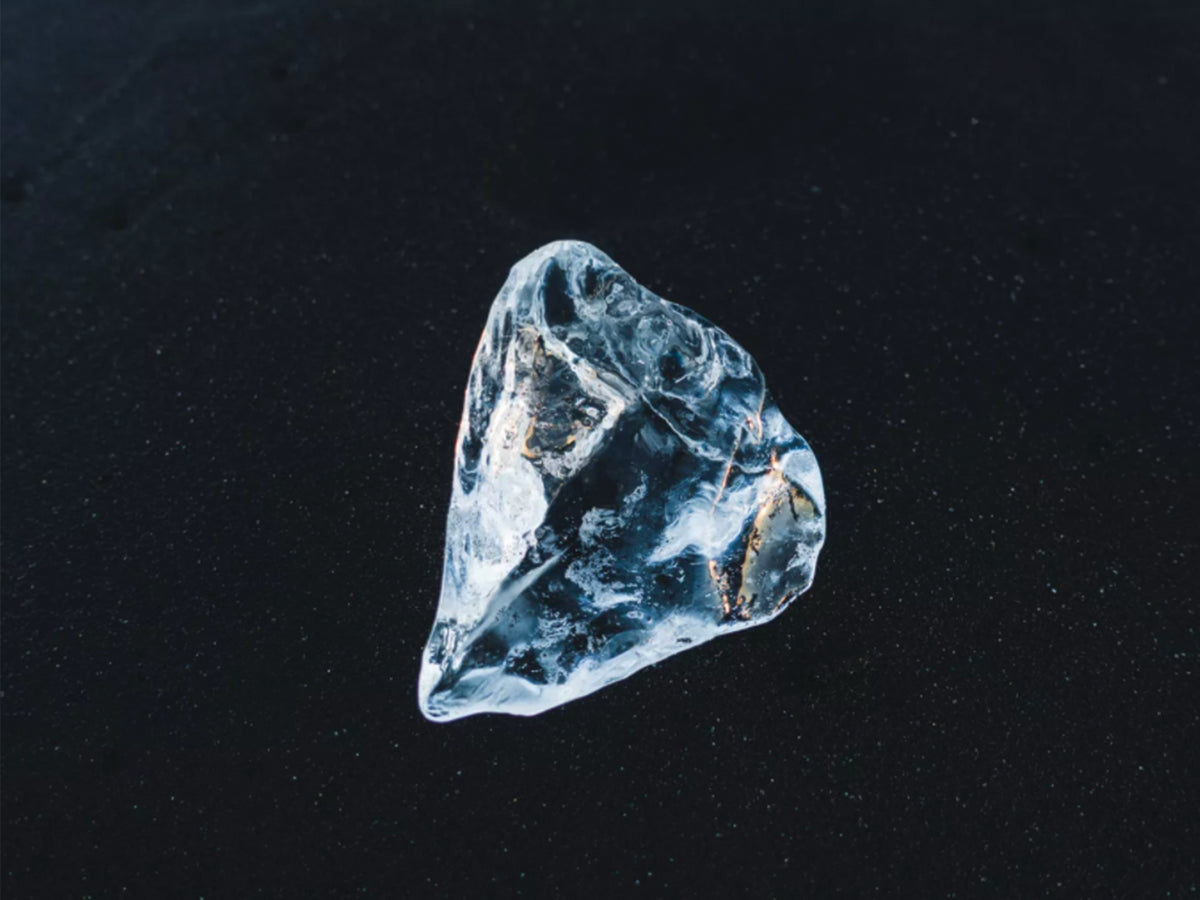Over the past few years, both the technology and interest in lab-created diamonds have increased. The opinions you’ll receive from many Jewelers within our industry can be quite strong (usually on the negative side). Full disclosure: I have presented and sold a few lab-created diamonds to my clients, and I tend to lean towards the opinion that lab-created diamonds fulfill a desire within our jewelry marketplace at this time.
I’ve often been asked…”David, what’s your opinion of lab-created diamonds?” I find it best to take a high-level view of not only the history of “earth-mined” diamonds…but also of the technology behind lab-created diamonds, and how their production might possibly affect values now and in the future.

Earth-mined diamonds:
For thousands of years, the only way to get a diamond was to dig one out of the ground. The scarcity of earth-grown diamonds and the difficulty of mining them was just part of what has made them so valuable. Diamonds are made from carbon atoms that are subjected to immense heat and pressure, deep within the Earth. Diamonds must be under 725,000 pounds of pressure per square inch, at a temperature of over 2000 degrees Fahrenheit. This process causes the carbon atoms to rearrange themselves into what we know as a diamond. Volcanic eruptions and other geological forces push diamonds up closer to the surface of the Earth, where they can be mined.
Because of the intensity of the natural process and the unpredictability of the results, a very small fraction of diamonds are suitable for use in jewelry. Given the overall rarity of diamonds, people have always tried to figure out a way to outsmart Mother Nature to create their own.

The History of Synthetic (or lab-created) Diamonds:
Around 1797, scientists discovered that diamonds were 100% pure carbon. Soon after, the first scientists tried to create synthetic diamonds in a laboratory setting but were unable to control the heat and pressure needed to turn plain carbon into a diamond. Approximately 100 years later, scientist began to have some progress by superheating the carbon and then using a very cold water bath to cause the carbon to shrink (in attempts to replicate the high pressures needed to make diamonds naturally.) Unfortunately their experiments weren’t very successful. Not many stones could be produced, and they were very low in quality.
In the past 20-30 years, scientists have begun producing synthetic diamonds that have all of the same physical characteristics as natural diamonds, although they are not identical. A synthetic stone can be differentiated from a natural diamond by its growth structure and inclusions. The quick, artificial growth process leaves marks inside the stone, which can be easily identified with the right equipment. The naturally occurring inclusions in an earth-mined diamond, meanwhile, were formed billions of year ago; they often contain perfectly preserved elements of great scientific value. Inclusions in lab-created diamonds are effectively defects created during the manufacturing process.
Finally, lab-created diamonds are treated for color most of the time, as they are 100% clear when created. They have no nitrogen in them, so the artificially colored process is one of the ways that an expert diamond evaluator can tell them apart from an earth-mined diamond.

Do Lab-Created Diamonds Have Value?:
So…now let’s get down to the real question of price/value as it pertains to lab-created stones in comparison to earth-mined diamonds. Lab-created diamonds are typically only found in larger carat weights. Smaller-sized lab-created diamonds from about .01 to .30 carats aren’t readily available at this time, due to a quirk of the technology. Lab-created diamonds in the 1 carat + range are what you can typically find, and they tend to be on average 30-40% cheaper than their earth-mined counter-parts (everything else being equal, i.e. color, clarity & cut.)
Will this reduced percentage remain a constant within the market going forward, many are skeptical. As is often times the case, as technology gets better…prices tend to shift downward. We have already seen more companies entering into the lab-created market within the past couple of years, creating additional competition within the marketplace.

Conflict-free & Eco-friendly: Lab-created vs Earth-mined Diamonds:
Many clients are attracted to the perceived “conflict-free” proposition of lab-created diamonds, although the earth-mined diamond industry today has some of the strictest regulations of any industry in the world.
Under the Kimberly Process (established in 2003 to prevent “conflict diamonds” from entering the mainstream rough diamond market by the United Nations General Assembly), the modern diamond mining industry has gone through a profound transformation over the past 20 years. Conflict diamonds have been virtually eradicated, with strict standards being established during this time. More than 99.8% of natural diamonds on the market are now guaranteed to be conflict-free through this process.
The diamond industry supports the livelihood of more than 10 million people across the globe, mostly in India and Southern Africa. Earth-mined diamonds contribute 8.4 billion per year to African economies, and billions more around the world. Revenue from the industry has enabled local governments to invest in public healthcare, education, roads, electricity and sanitation. At this time, the manufactured diamond industry does not have a similar record.
One other item of consideration with lab-created diamonds is their eco-friendly claims aren’t completely without a carbon footprint. A lab-created diamond uses the widely adopted Chemical Vapor Deposition (CVD) method, which is similar to that of a natural diamond. This operation does require the use of fossil-fuel generated electricity to achieve the end result.

In Summary:
When deciding whether or not to purchase a lab-created diamond, consumers should be sure it’s accompanied with an independent lab certificate (similar to most earth-mined diamonds sold today.) They should also consider that whatever price the lab-created diamond is today, there is the possibility its value (or price to obtain) could be less in the future.
In today’s marketplace, earth-mined diamonds do retain a resale value…although the percentage can vary greatly based on the individual diamond and current market demand for the stone. There currently isn’t a resale market for lab-created diamonds, but I do believe one could be established in the future. Unfortunately, it’s impossible to know what those valuation tables might look like at this time.






